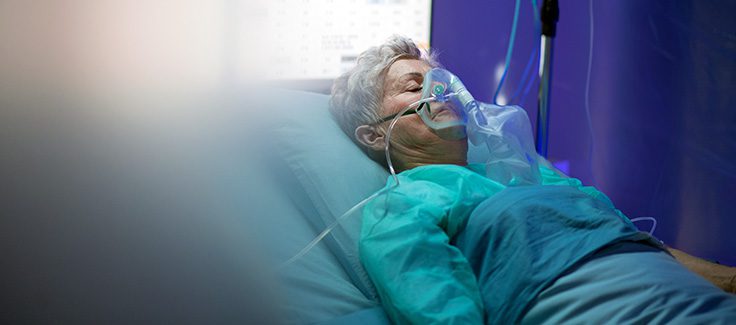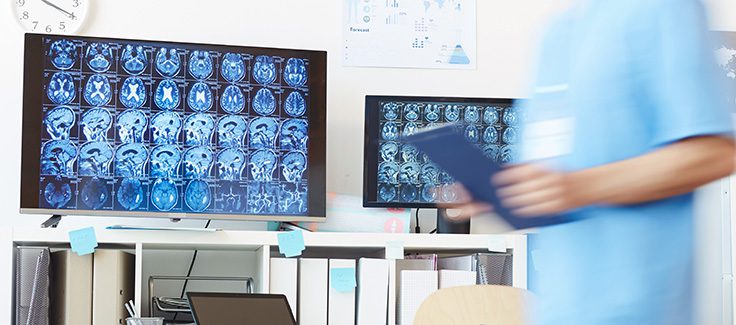Regulations for importing medical equipment in Mexico, Colombia, and Chile
Once the pandemic had been overcome in 2022, spending on medical equipment unrelated to COVID-19 care picked up again in the region, and investment in technology increased. The forecast is that the medical equipment market in the region’s top buying countries is set to grow in 2023. There are several reports showing this.
In March 2022, a study by GHI on Latin American hospitals found that 75% of hospitals in the region said their budgeting processes were no longer restricting the volume of procedures. In fact, more than a quarter of hospitals reported an increase in their use of consumables, particularly those in Brazil. However, the inventory of consumables also grew, suggesting lower growth rates in the third quarter of 2022, although the trend in consumption continues to rise.
It is worth noting that the prevalence of specialized equipment throughout the region is still low. Data produced by GHI highlight both the average penetration considering the entire universe of hospitals (21,951), as well as the average count per hospital carrying that particular type of high-complexity equipment, and they show that not all hospitals in need of this equipment actually have it.
The specifications are cited in the MedTech Outlook: Latin America 2023 report, presenting more than 1,500 key data points of crucial information for teams aiming to market and sell medical devices and equipment to Latin America.
Countries that invested the most in medical equipment during and after the pandemic
Here are some of the Latin American countries that invested the most in medical equipment during the pandemic and in the year after.
- Brazil: The market here was among the most robust in Latin America in terms of capital investment between 2020 and 2021. In 2022, as a result of political problems and the change of administration, all investments fell. In 2023 and 2024, infrastructure and capital throughout the country is expected to see renewed growth under the new administration.
- Mexico: The country saw an albeit tentative increase in investment during 2020 and 2021, while in 2022 it began buying and improving infrastructure.
- Argentina: Its purchasing strategy has been the same for all three years, as its level of investment was 8.7% during the pandemic, 8.8% in 2021, and close to 11% in 2022.
- Colombia and Chile: Like Argentina, Colombia has kept to the same investment strategy. Chile, on the other hand, has always stood out as one the most advanced countries, especially in terms of technology, and 2022 was no exception, as it continued at the forefront with its infrastructure. In fact Chile is the only country in Latin America whose hospitals are comparable with those of the United States in terms of size. Hospitals in Latin America are generally small, and Chile has between 120 and 140 beds per hospital, compared to the Latin American average of 46 beds.

Dialogue between business associations and government authorities
Various business chambers and associations are developing initiatives to boost the medical devices sector as part of the economic plans of the governments in the region. In that respect, with the Mexican Association of Innovative Medical Device Industries (AMID) and the National Chamber of the Pharmaceutical Industry (CANIFARMA) working constantly to highlight the dynamism of the medical devices sector, Mexico is leading the way. The main challenge is the sector’s difficulty in being able to import and export products. It is addressing this challenge through rounds of negotiation between the private sector, represented by the chambers of industry, and the public sector, namely the regulatory and economic authorities, in each country.
In this context, in order to sell medical equipment in Latin America—a market open to countless business opportunities because it is keen to optimize its technological infrastructures in all fields of health care—the regulatory aspect is a key factor.
It is illustrative to compare where the legislation governing the medical device sector in each country is at, where regulatory changes are headed, and how, from the industry’s standpoint, it is possible to set the countries’ regulations on a path toward regulatory convergence.
In Mexico
Applications for an import permit for medical devices (diagnostic devices, prostheses, health devices, etc.) are made to COFEPRIS (Federal Commission for the Protection of Health Risks), and entail presenting the necessary documentation to obtain it. There are different forms depending on the type of application being made:
- If the device is unregistered or experimental but does not include psychotropic or narcotic drugs.
- If a medical device is being imported for personal use, for disease treatment, prevention, or rehabilitation, where a medical prescription and a medical license covering the amount to be purchased may be required.
- If you intend to acquire used medical devices and have a public, social, or private establishment.
COFEPRIS issues a series of recommendations for acquiring any kind of medical device either from within the country or abroad. It recommends verifying observance of and compliance with Mexican Official Standards, and the guidelines contained within them, for example, the labeling requirements standard, NOM-137-SSA1-2008, Labeling of Medical Devices. Labeling must contain, in Spanish, the details relating to the medical devices, whether they are made within the country or abroad, the business name and address of the manufacturer or distributor, and their Secretariat of Health registration details.

In Colombia
The National Institute of Drug and Food Vigilance (INVIMA) regulates the business of manufacturers and importers of medical devices and controlled-technology biomedical equipment in Colombia. Its last update was circular number 5000-0001-22, which specifies the marketing permits, rationalization of the certification process for manufacturers and importers of medical devices, and the requirements for importing components, accessories, or spare parts that are new but over two years old from the manufacture date (clearance stock), used, or refurbished for class I, IIA, IIB, and III biomedical equipment.
The resolution clarifies certain aspects for the implementation of Decree 4725 of 2005, which was in force until 2022, and unifies criteria and guidelines. The regulation specifies aspects such as the technical and legal characteristics that need to be submitted for the importation paperwork:
- Components, accessories, and/or spare parts for biomedical equipment and the procedure for obtaining authorization to import them.
- Importation of new components, accessories, or spare parts.
- Implementation of the requirements for obtaining the health product registration or marketing permit.
In addition, if a company expands its portfolio and acquires a new line, the certificate it has in effect will cover these new lines of medical devices, on the understanding that companies will comply fully with the requirements in place for these new medical devices.
In Chile
Despite the delays and difficulties that the pandemic prompted in the supply plan for medical equipment included in the Chilean government’s National Health Investment Plan 2018–2022, the market is still visibly expanding. President Gabriel Boric remains committed to the development of hospital infrastructure in a mixed health care sector where the public health system represents more than 80% of the available beds.
Public investment, set at 10 billion dollars for the construction of 75 hospitals and the renovation of some existing ones, and for the development of more than 100 primary care centers, has been maintained during the post-pandemic period, and it is a significant business opportunity for the industry that supplies medical materials, promising a constant increase in demand over the next few years.
Chile’s health care market is wide open to new trends in medicine and is a regional pioneer in the adoption and development of new technologies and medical equipment. It is also a market with no major barriers to entry, but one with a great deal of competition. This will force companies not only to take into consideration regulatory compliance to bring their products to the Chilean health sector, but also to invest in marketing and identify where to position themselves strategically.
In terms of business opportunities with the Chilean state, it is worth noting that Chile’s public health organizations publish their procurement needs on the Mercado Público (public market) portal, the transactional platform administrated by ChileCompra used by more than 850 public bodies to procure products and services from businesses of all sizes and from around the country.
Medical equipment and devices need to be registered with the National Agency for Medical Devices and Development (ANDID), which is in charge of ensuring the safety and performance of medical devices, including the in vitro diagnostic medical devices used in the country, through control, inspection, and oversight during all stages of their life cycle. The Agency is part of the Ministry of Health’s Public Health Institute.
Another useful document to learn about the regulations for importing medical equipment into Chile is the Guide for Medical Device Classification According to Risk.
In order to bring in medical devices (DM) and in vitro diagnostic medical devices (DMDIV), an application has to be filed with the Public Health Institute (ISP) of Chile for a Customs Destination Certificate (CDA). This document specifies the destination establishment for the medical devices, in compliance with Act 18,164 of the Ministry of Finance.
The application can be made electronically through the Online Applications Computer System (GICONA) to bring in goods through customs border posts located throughout the country, with the exception of for the free zone, where the application has to be made manually.
Next steps
Contact GHI if you would like to learn more about regulatory issues for medical equipment and devices in Latin America. If you need a competitive overview of the medical equipment solutions sector, our HospiScope and ShareScope databases can provide you with high-quality information.





